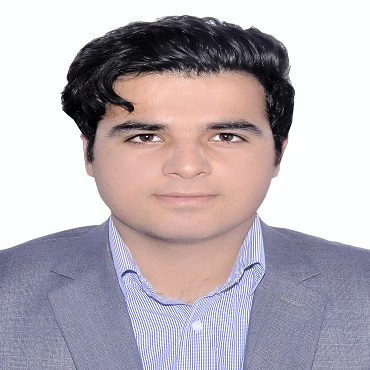Scientific Program
Keynote Session:
Title: Cardiovascular Disease, Classical Risk Factors and Nutrition: The Role of Sex Differences
Biography:
Mark Woodward PhD F Med Science works at the George Institute for Global Health. He is Professor of Statistics and Epidemiology at the University of Oxford, UK, Professor of Medical Statistics at the University of New South Wales, Australia and Adjunct Professor of Epidemiology at Johns Hopkins University, USA. His main research areas are cardiovascular disease, renal disease and diabetes. His recent work has had a particular focus on sex differences, in which he has a leadership role at the George Institute. He has published two text-books on medical statistics and well over 600 peer-reviewed publications. In each of the last five years, Professor Woodward was named by Thomson Reuters/Clarivate Analytics as one of ‘The World’s Most Influential Scientific Minds’.
Abstract:
Statement of the Problem:
Cardiovascular disease is the under-recognized primary cause of death and disability in women worldwide, both in high- and low-income populations. One of its major risk factors is obesity, which is a major factor in the development of diabetes. Evidence suggests that obesity is increasing more in women than men. In turn, diabetes is itself a leading risk factor for CVD, with a greater effect on women than men. Nutrition is a basic issue in this chain of causality, and hence sex differences in nutrition are of fundamental importance. Methodology and Theoretical Orientation: Meta-analyses were used to identify sex differences in the obesity-diabetes-CVD triad. Cross-sectional data on over 200,000 people (52% women) in the UK Bio bank were used to explore sex differences in macronutrient intakes and adherence to dietary recommendations. Findings: Men had greater intakes of energy but were less likely to have energy intakes above the estimated average requirement compared with women. For all macronutrients, men had greater absolute intakes while women had greater intakes as a percentage of energy. Women were more likely to have intakes that exceeded recommendations for total fat, saturated fat and total sugar. Men were less likely to achieve the minimum recommended intakes for protein, polyunsaturated fat and total carbohydrate. Sex differences in dietary intakes were moderated by age and, to some extent, by socioeconomic status. Conclusion & Significance: There are significant sex differences in adherence to dietary recommendations, particularly for sugar. Dietary interventions and advice may need a specific focus on women, as part of a recommended life-course approach to women’s health (Bennett et al, BMJ Open, 2018).
Title: Awareness of Nutritional Risk Factors for Cancer among the French Population: The French Cancer Barometer
Biography:
Jerome Foucaud holds a PhD in Humanities sciences. He is the Head of the department for research in Humanities and Social Sciences, Epidemiology and Public Health at the French National Cancer Institute. In this National Health and Scientific Agency for cancer control, he is charge to build up research and to lead the elaboration of data evidence about cancer in Humanities and Social Sciences. He is also associated researcher to the Health Education and Practices Laboratory (LEPS EA 3412). In parallel of these activities, he teaches patient education in different universities in France.
Abstract:
Statement of the Problem:
Different factors are known to increase or decrease cancer risk (e.g., tobacco use, alcohol, diet). To date, few national studies have been conducted to investigate individuals’ perceptions, attitudes and behaviors linked to these factors to adapt national prevention strategies and to raise public awareness on cancer. In this line, the French Cancer Barometer, a population-based-survey, is carried out every five years. However, individuals’ perceptions on nutritional risk factors have been little studied to date. Hence, our aims are: (1) to identify the least perceived nutritional risk factors for cancer, and (2) to assess the evolution of the French population perceptions on cancer risks over time (2010-2015).
Methodology:
A randomly selected sample of participants aged 15-75 years (n=3345 in 2010) and 15-85 years (n=3764 in 2015), representative of the French population, were interviewed. Questions on perception of diet, physical activity, obesity and breastfeeding as cancer risk factors were asked. Findings: In 2015, nutritional factors were well perceived by the participants as having an important role in cancer development: diet (90.8%), physical activity (70%), obesity (76%); except for breastfeeding (34%). Some diet factors were also moderately perceived, such as the benefits of fruits and vegetables (58.1%) or the risks of red meat (43%) and salt and salted foods (55%) consumption. Age and education were associated to the perception of nutritional risk factors. In 2015, compared to 2010, nutritional risk factors were more perceived, and participants had stronger opinion.
Conclusion & Significance:
Nutrition is perceived by the French population in 2010 and 2015 as an important factor in cancer development, but some factors are still not very well perceived in 2015.Demographic variables associated to a lesser perception are highlighted. Thus, recommendations to improve prevention strategies and to raise public awareness are made.
Title: Study of the Association of the Dietary Pattern and Chronic Diseases Effective Factors on the General Health Condition of Tehrans Opposite Gender Adult Twins
Biography:
Dr. Shahryar Eghtesadi received Bachelor degree in Nutrition Science and Food Chemistry 1975, from Shahid Beheshti University of Medical Sciences, Tehran; MSPH degree in Nutrition, 1977, from Tehran University of Medical Sciences, Tehran and PhD from University of California at Davis(UCD), USA, in Nutrition (1985). He served as Visiting Scientist in USDA Human Nutrition Research Center on Aging (HNRCA),Tufts University, Boston, USA (1994-1995); Full professor of Tabriz, Iran and Tehran Universities of Medical Sciences and currently serves as Professor of Azad University, Science & Research Branch,Tehran . He was the chairs of Departments of Nutrition and Biochemistry, Biochemistry & Clinical Nutrition, Public Health Nutrition and Nutrition in aforementioned Universities. Also Served as Associate Dean of School of Public Health & Nutrition and Dean of School of Public Health of Tabriz and Iran Universities of Medical Sciences respectively.He was selected as distinguished professor and Scientist, for long and extended period of time, experienced teaching various courses in nutrition in undergraduate, graduate and postgraduate and international Bureau programs and directed many projects and dissertation of MS and PhD programs and Published numerous peer reviewed articles in journals and also edited several books and finally served as Principal Investigator of World Bank Project for Capacity Building in Nutrition in Iran.
Abstract:
Title: Genotoxic effect of sodium fluoride on stem cells from human exfoliated deciduous teeth
Biography:
Sahar Talebi has graduated in dentistry. She is working as a dentist and clinician, her field of interest is tooth development and dental stem cell. She is experienced in isolation, culture and preservation of stem cell from human exfoliated deciduous teeth (SHED).
Abstract:
Title: Sexual Assault, Body Identity & Disordered Eating: Food & Mind-Body Medicine for Improving Health Outcomes
Biography:
Abstract:
Problem Identification:
According to RAINN.org (2017), “every 98 seconds an American is sexually assaulted. When broken down one in 4 girls and one in six boys before the age of 18 will experience some form of sexual abuse. One in five women and one in 16 men are sexually assaulted in college.” (National Sexual Violence Resource Center, 2015). “Sexual assault is underreported, with only 63% of cases reported to authorities and just 12% of child sexual abuse cases.”(NSVRC, 2015) How the female psyche responds to sexual assault and boundary violations is different than males.
Clinical decision-making:
Following sexual assault it is expected that the subject will experience trauma-related symptoms. “In fact, up to 94% of women who are raped have experience post-traumatic stress disorder.” (Barbash, E. 2017) Up to “70% of sexual assault survivors experience moderate to severe distress, larger than any other violent crime according to the National Sexual Violence Resource Center, 2015.” Females who experience sexual assault and/or violence may have a predisposition to self-harm vs. harming others.
Self-harm can range in addictive, high-risk or other harmful behaviors. Following the experience of trauma theremay be underlying neurobiological mechanisms at play which can lead to disordered eating. Disordered eating may include binge eating, food addictions, Hedonic eating, bulimia and anorexia nervosa.
In this research we introduce how trauma-related events when treated with healthy & empowering interventions can improve recovery and lead to better health outcomes. Trauma when treated with positive psychology principles may improve mind health & ego development in humans when addressed appropriately within a framework of creating post-traumatic growth. The research has been done over 13 years including a Master’s in leadership Studies reviewing the most developed brain systems cognitively, emotionally & morally for social progress & human flourishing. We have evaluated historical practices from the Vedic Sciences, psychiatry,nutritional sciences to develop a model for improving health economic and patient-reported outcomes following sexual assault. The model includes mindful eating, mindfulness meditation and food as medicine for grounding the subject after trauma. These techniques may promote better health outcomes for the nervous system reducing subject related reactions to memories.
Stress arousal has an impact on arousing the sympathetic nervous system response. Other interventions including certain nutritious foods can disengage stress arousal stimulating the parasympathetic nervous system response for grounding and calming the survivor. We discuss the role sympathetic nervous system response has in producing “fight, flight or freeze” responses upon arousal. We further elaborate on historical practices from the Vedic sciences, nutrition and the role they can play with mind-body medicine at accelerating recovery.
Oral Session 1:
- Oral Session -1
Title: Assessment of Fish Oil Effects on the Testicular Structure of Male Rats
Biography:
Ghada Ahmed El hag Mohamed is a Associate Professor of Zoology in King Abdulaziz University, Jeddah, Saudi Arabia.
Abstract:
The aim of this study was to investigate the protective effects of fish oil on lead acetate induced testis toxicity rats. Forty male rats were randomly divided into 4 groups, 10 rats in each. Control rats received normal saline, while treated rats received lead acetate (150 mg/kg body weight) three times weekly, lead acetate and fish oil (650 mg/kg body weight/day) and fish oil (650 mg/kg body weight/day) for six weeks by gavage tube.
The results showed an insignificant increase in mean testis weight with highest and lowest testis weight gained was of 3.09±0.31g and 2.82±0.76 g respectively. Testicular histology of rats treated with fish oil revealed slight changes in the uniformity of arrangements of seminiferous tubules.
Data from present study suggests that fish oil have been initiating the positive effects on testicular normal structure in lead acetate treated rats.
Title: Household Food Insecurity and its Determinants in Lower River Region, Gambia
Biography:
Abstract:
Title: The Role of Ayurveda for the Prevention of Non Communicable Diseases
Biography:
Abstract:
Title: Nutritional Status and Quality of Life in Vietnamese Outpatients with Chronic Obstructive Pulmonary Disease (COPD)
Biography:
Abstract:
Title: Genotoxic Effect of Sodium Fluoride on Stem Cells from Human Exfoliated Deciduous Teeth
Biography:
Sahar Talebi has graduated in dentistry. She is working as a dentist and clinician, her field of interest is tooth development and dental stem cell. She is experienced in isolation, culture and preservation of stem cell from human exfoliated deciduous teeth.
Abstract:
Title: Genotoxic effect of sodium fluoride on stem cells from human exfoliated deciduous teeth
Biography:
Sahar Talebi has graduated in dentistry. She is working as a dentist and clinician, her field of interest is tooth development and dental stem cell. She is experienced in isolation, culture and preservation of stem cell from human exfoliated deciduous teeth.
Abstract:
Title: Encyclopedia of Bioavailability and Bioeqivalence- Nutrition and Its Importance
Biography:
Dr. Said poyan sadat has completed his MD at the age of 25 years from Ariana University of Medical . He is working as a HMIS Manager in Afghan Red Crescent Society. And also he has working as a medical doctor in a Hospital, part time
Abstract:
Introduction :
Nutrition, nourishment, or aliment, is the supply of materials - food - required by organisms and cells to stay alive. In science and human medicine, nutrition is the science or practice of consuming and utilizing foods.In hospitals, nutrition may refer to the food requirements of patients, including nutritional solutions delivered via an IV (intravenous) or IG (intra gastric) tube. Nutritional science studies how the body breaks food down (catabolism) and how it repairs and creates cells and tissue (anabolism). Catabolism and anabolism combined can also be referred to as metabolism. Nutritional science also examines how the body responds to food.
Fast facts on nutrition:
- The human body requires seven major types of nutrients.
- Not all nutrients provide energy but are still important, such as water and fiber.
- Micronutrients are important but required in smaller amounts.
- Vitamins are essential organic compounds that the human body cannot synthesize.
Title: Impact of lifestyle training on serum lipids of children and adolescents with dyslipidemia: a quasi-experimental study
Biography:
Dr.Marjan Farzad is a research assistant at cardiovascular diseases research center and also a faculty member of Birjand University of Medical Sciences in Iran .
Abstract:
Discussion :
Dyslipidemia is one of the most important risk factors for cardiovascular diseases. It can cause a rise in the incidence of these diseases in adulthood. Lifestyle modification is a determinant factor for incidence,prognosis and complications of cardiovascular diseases.The aim of the study was to evaluate the effect of lifestyle modification on serum lipids of children and adolescents with dyslipidemia.This quasi-experimental study was conducted on all dyslipidemic children and adolescents referred to the cardiovascular diseases research center of Birjand University of Medical Sciences, Iran. Participants underwent 6 sessions of training, appropriate to their age, including nutrition and healthy lifestyle. Before the study and 6 months after trainings, in the same circumstances, subjects were examined for level of blood lipids and blood pressure. Data were analyzed using paired-samples t- test, Pearson correlation coefficient, and independent-samples t-test. P-value of less than 0.05 was considered statistically significant.Of 50 children with dyslipidemia, 52% were female and 48% were male. The mean age of participants was 12.77±1.84 years. The study showed a significant difference between the mean of cholesterol (p<0.001) and LDL (p=0.008) before and after the study. Comparing the changes made in the mean of variables such as FBS, Cholesterol, TG, HDL and LDL as a result of gender-based lifestyle modification, no significant difference between the two sexes was seen (p>0.05). Pearson correlation coefficient showed no significant relationship between the mean of these variables in children as a result of lifestyle modification and their age (p>0.05). Lifestyle modification relying on exercise and physical activity, nutrition and sufficient sleep and rest can be effective as a non-pharmacological supplement in reducing blood lipids and dyslipidemia. Lifestyle modification training is essential for both children and their parents after diagnosis of dyslipidemia as a part of the therapeutic plan.
Title: Antimicrobial Efficacy of Polyherbal -made Toothpaste and Mouthwash against Oral Pathogens: A Randomized Clinical Trial
Biography:
- Batool Sadeghi-Nejad Graduated of bachelor degree (B. Sc.) in the field of public health from Isfahan University of Medical Sciences on Feb. 15 1988
- Holder of master degree (M. Sc.) in the field of Medical Parasitology from Isfahan University of Medical Sciences on April 30 1997.
- Holder Ph.D. degree in Medical Mycology from Botany department of Pune University, India on Feb. 2008.. She is members of Scientist Academic Institution, Abadan School of Medical Sciences, Abadan, Iran (Assistant professor, Ph.D Medical Mycology). She has published more than 24 papers in reputed journals and has been serving as an reviewer board member of repute.
Abstract:
Background: The aim of this study was to evaluation in vivo antimicrobial effects of polyherbal-made toothpaste and mouthwash to form effervescent tablet containing the extracts of Artemisia dracunculus, Satureja khuzestanica and Myrtus communis against oral pathogenic microorganisms (Streptococcus sanguinis, Streptococcu salivarious, Streptococcu mutans and Candida albicans).
Methods: This study was clinical trial without control (Before – After test) that were performed on 20 volunteers, healthy with normal gums without bleeding or inflammation. Twenty volunteers will be given herbal toothpaste and asking from them to wash their mouths by sterile deionized water, pour the contents of their mouth into sterile container as samples of before test. Then asked them to use brushing their teeth with herbal toothpaste. The next morning again asked from same volunteers to wash their mouths by deionized water for one minute and pour the contents of their mouth into another sterile container as sample of after test. Then the samples transferred to laboratory immediately. Aliquots of 100µl of each sample inoculated on petri dishes containing blood agar for bacteria and Sabouraud dextrose agar for Candida albicans. Then colonies counted before and after test, separately. This process were repeated for the herbal effervescent tablets mouthwash by other 20 volunteers with same condition.
Results:
According to the laboratory results, the Candida albicans was isolated from all the voluntaries. The scores of colony growth decreased significantly between before - after test during the studies (p<0.001).
Conclusion: The results were revealed that polyherbal toothpaste and mouthwash could be effective for prevention of prevention of dental caries in future.















